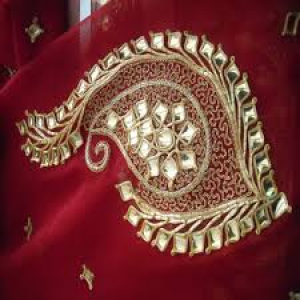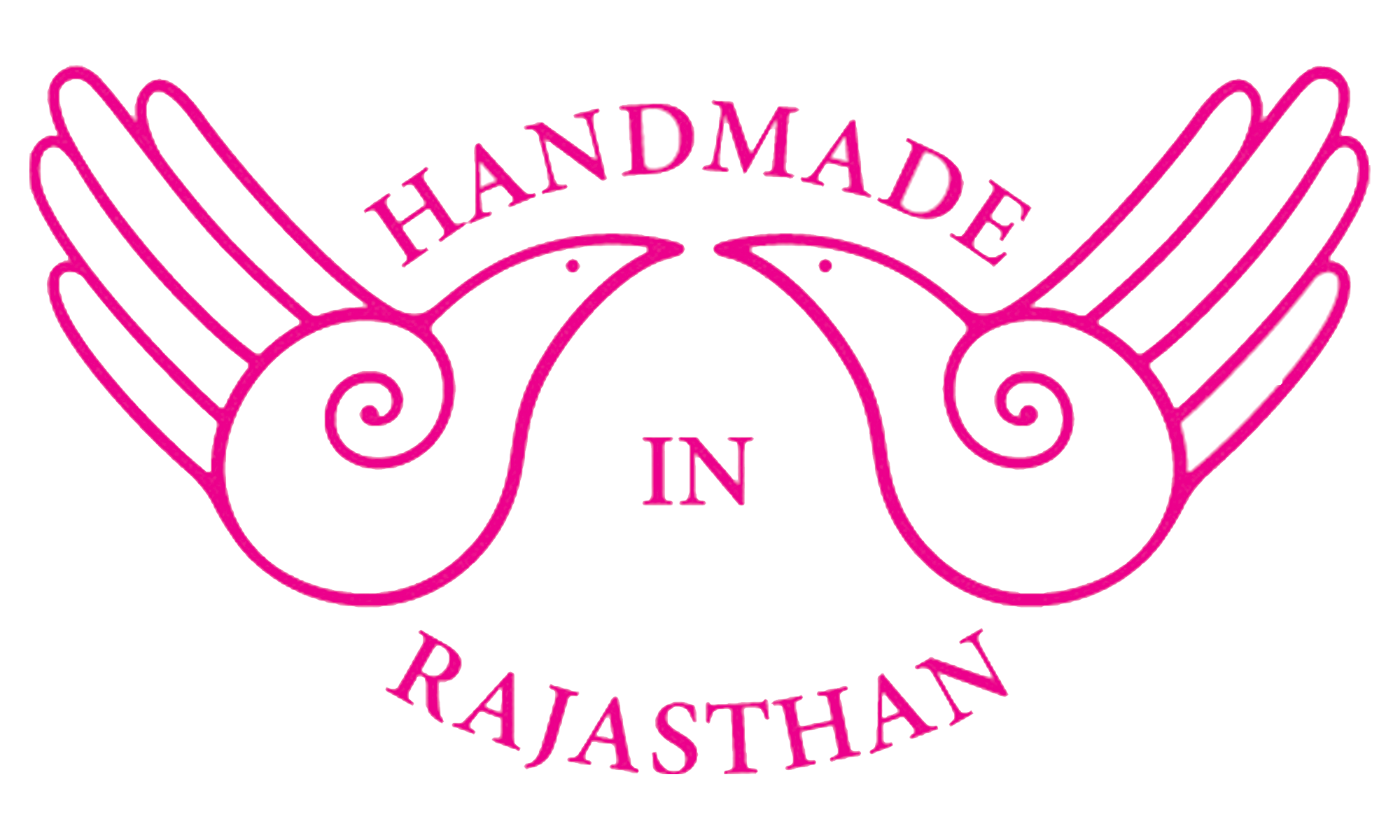- Home
- About US
- Art and Craft
- Artisans
- Master Crafts Persons
- Supporting Institutions
- News and Events
- Schemes
- Contact us
- Contact

‘Danke-ka-kaam’ is a kind of metal embroidery in Rajasthan that is a decorative feature in Rajasthani fabrics. It’s a 400-year old embroidery craft in Udaipur, Rajasthan. As of now there are just two practitioners of the craft who does the embroidery. It's a craft that has primarily been practiced by Udaipur's Bohra community. At a workshop held in Udaipur this year, the practitioners was persuaded with great difficulty to train a group of 20 youngsters in the art. When it ended, he proudly reported that at least three had 'tremendous potential' and he would train them further if enough business came his way. The 'danka' is a small square plate, varied in size, but not bigger than 1.5 cm. Though originally it was made of pure gold, now silver-plated with gold dankas are used. To make the danka, thin, well-finished and polished silver sheets of 98 percent purity are electroplated in gold in strips of 30 cm X 2.5 cm. These are washed in water and polished with fine sand. Then the strips are cut into 1.5 cm squares and the squares hammered with a stone implement till they resemble the tip of an ice cream cone.This method was earlier also known as korpatti-ka-kaam. The cost of the Danke ka kaam is calculated according to its weight. This decorative technique is usually worked on fabrics like satin, chiffon or silk fabric. The fabric is stretched tightly on a wooden frame before it is embroidered and the craftsman sits on the floor. Danka pieces are spread on the fabric as required by the design. The danka is pierced with a sharp needle, bringing out the thread through the fabric. About three to five strands of kasab (gold or silver wire) are kept over each danka and couched down along its edges. It is secured with eight stitches in the shape of a knot. Two stitches go into the back and the other two at each corner and two on the front. About three to five strands of 'kasab' (gold or silver wire) are placed over each danka along its edges. It is secured with eight stitches in the shape of a knot - two at the back, one in each corner and two in the front.The most popular motifs used in danka work are inspired by nature - the sun, the moon as well as the paisley design in a stylised form.Round and flat metal braids about one quarter of a centimetre in width that is used to highlight the design.

